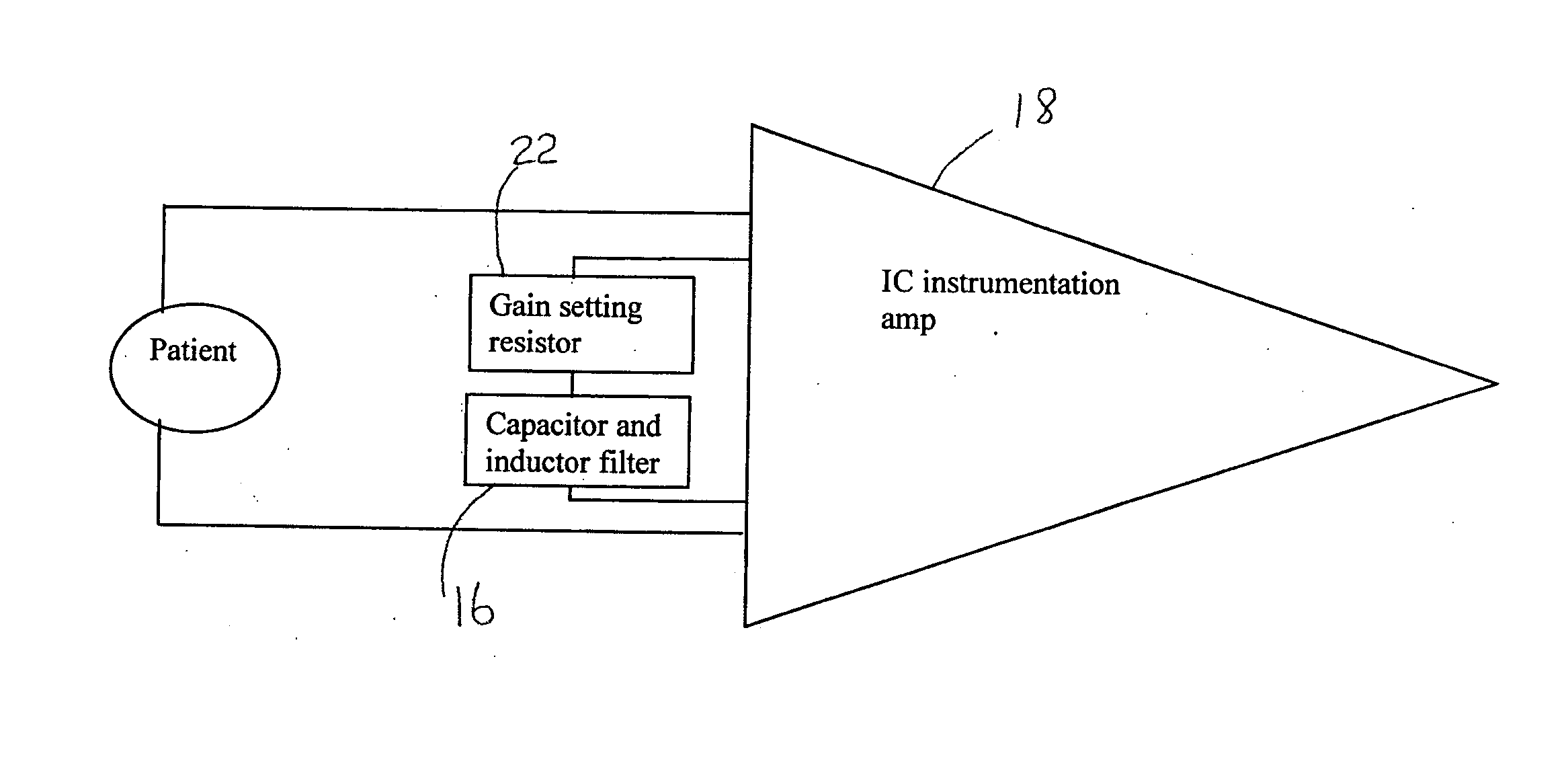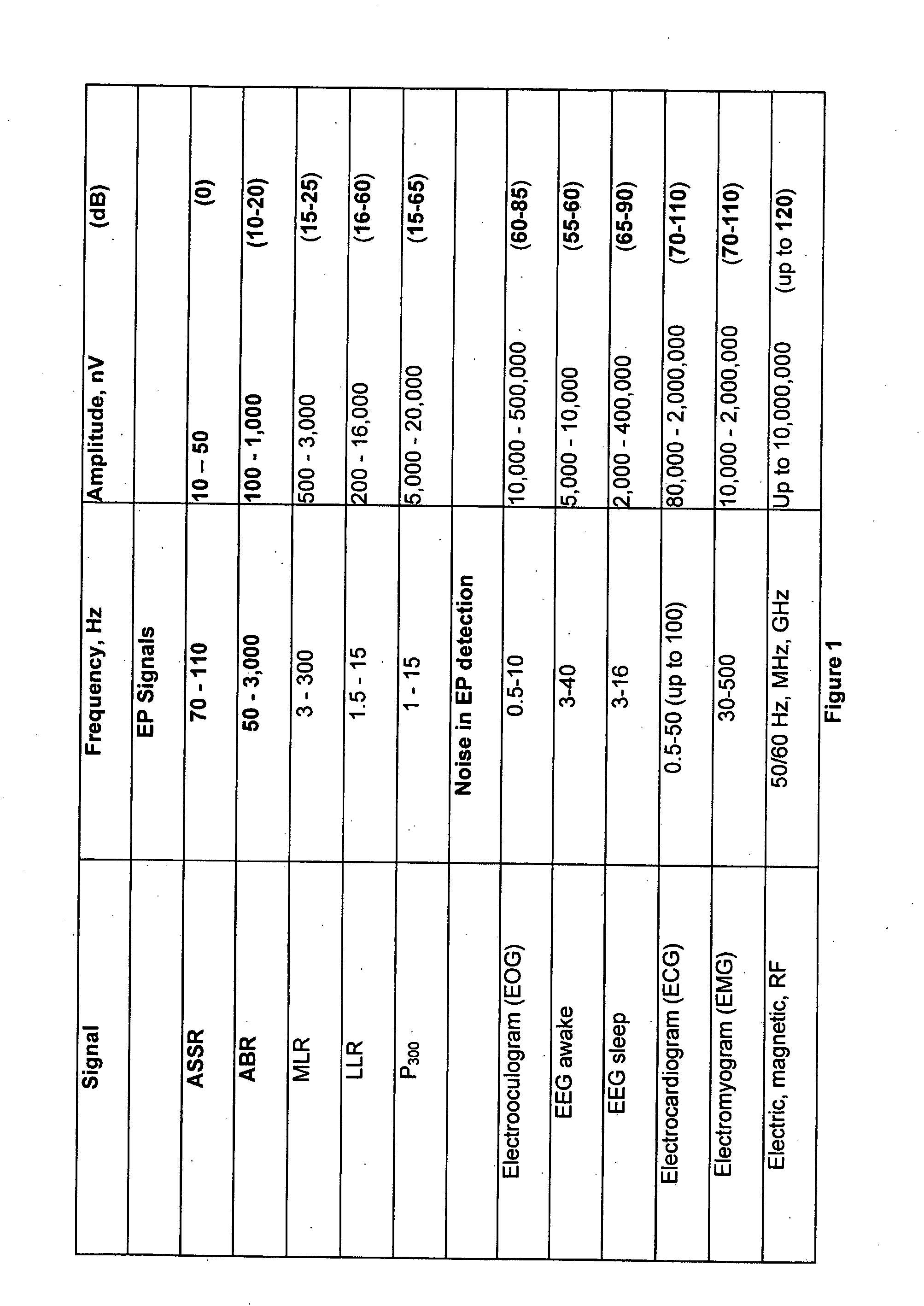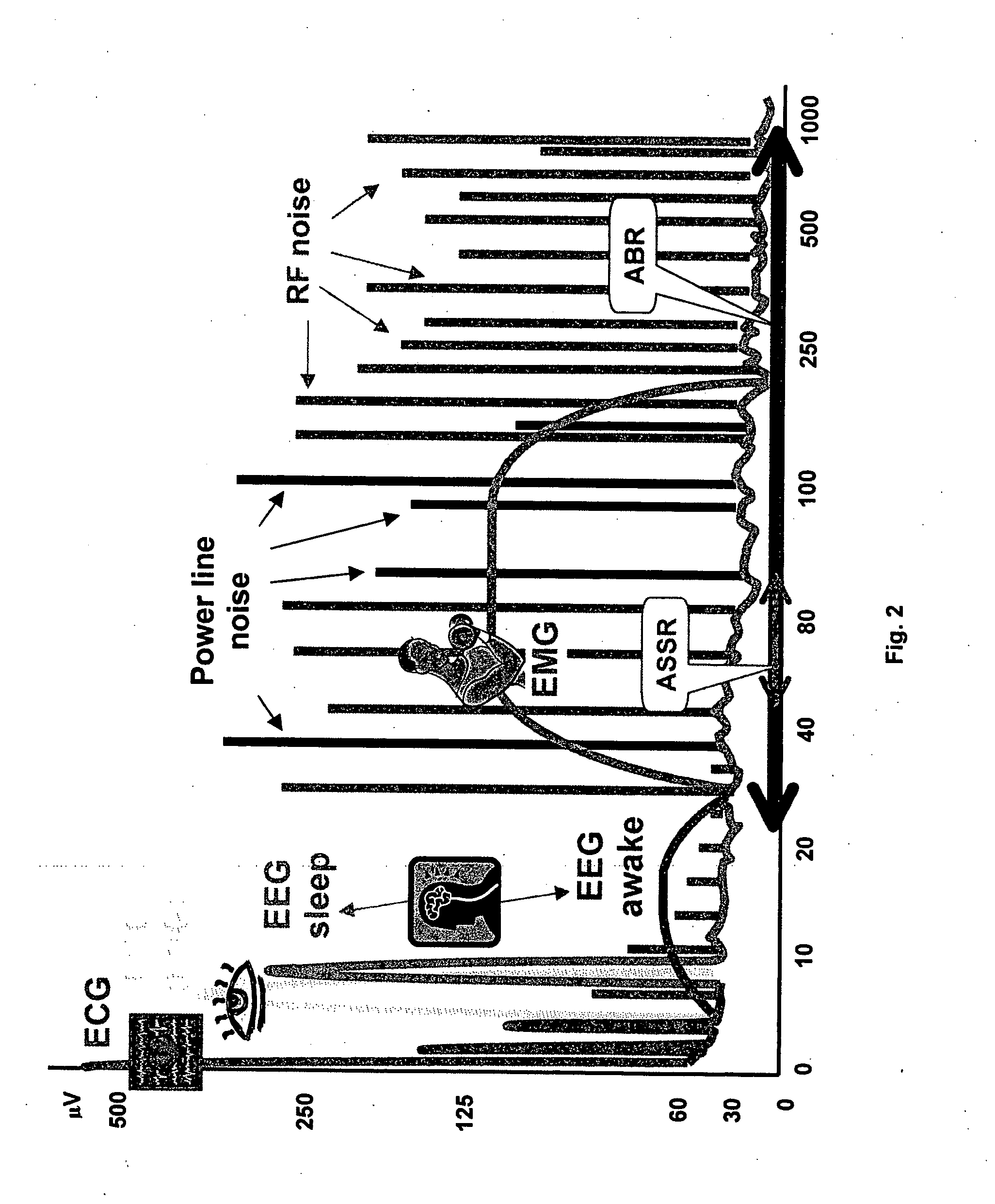System and method for filtering and detecting faint signals in noise
- Summary
- Abstract
- Description
- Claims
- Application Information
AI Technical Summary
Benefits of technology
Problems solved by technology
Method used
Image
Examples
Embodiment Construction
[0038] In an embodiment of the present invention a method of filtering signals prior to amplification includes filtering (low-pass, high-pass, band-reject or band-pass filtering) the signal prior to the first stage of amplification, thus reducing unwanted noise and allowing higher gain. As a result, EP signals at the output have larger amplitude, contain much less noise, and have larger SNR.
[0039]FIG. 5 shows a system 10 for measuring EP signals according to an embodiment of the invention. The system 10 includes two active electrodes 12 and a ground electrode 14 that allow the determination of a differential EP signal. In this particular embodiment, the ground electrode 14 includes a prefiltering network 16 and an amplifier 18 (shown in FIG. 7). The active electrodes connect to the prefiltering network 16. The provision of the prefiltering network 16 and amplifier 18 in proximity to the ground electrode 14 allows for shorter leads 20, which reduces EMI because the shorter leads are...
PUM
 Login to View More
Login to View More Abstract
Description
Claims
Application Information
 Login to View More
Login to View More - R&D
- Intellectual Property
- Life Sciences
- Materials
- Tech Scout
- Unparalleled Data Quality
- Higher Quality Content
- 60% Fewer Hallucinations
Browse by: Latest US Patents, China's latest patents, Technical Efficacy Thesaurus, Application Domain, Technology Topic, Popular Technical Reports.
© 2025 PatSnap. All rights reserved.Legal|Privacy policy|Modern Slavery Act Transparency Statement|Sitemap|About US| Contact US: help@patsnap.com



